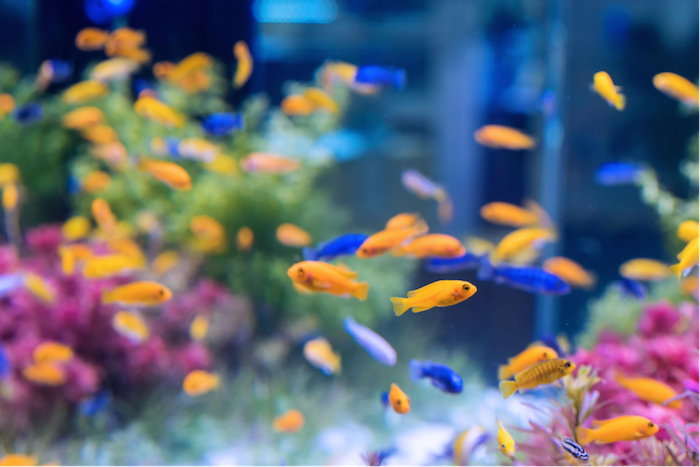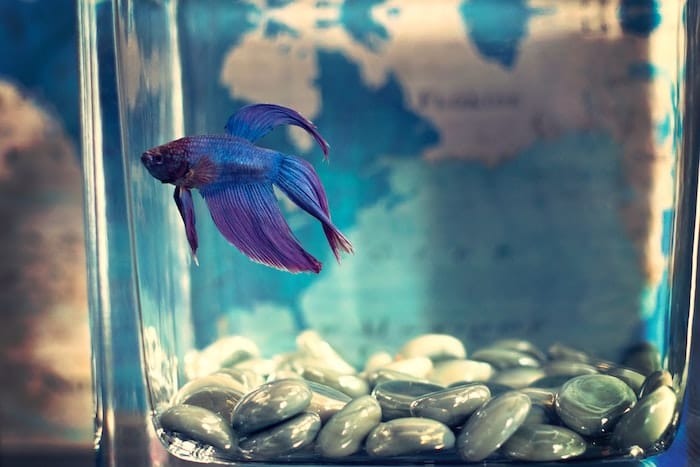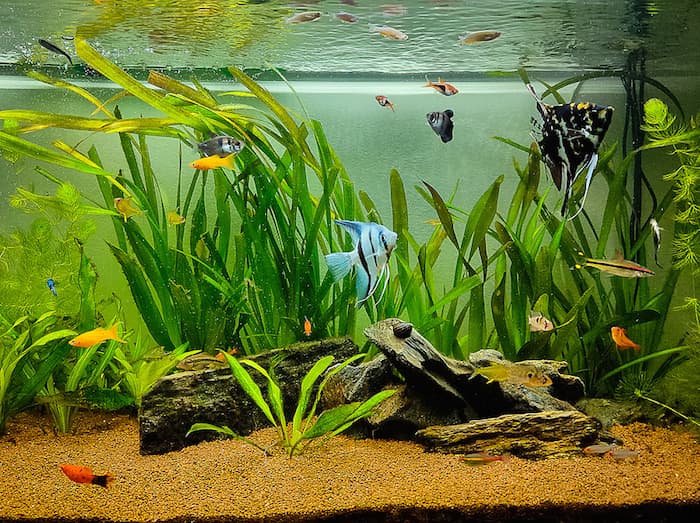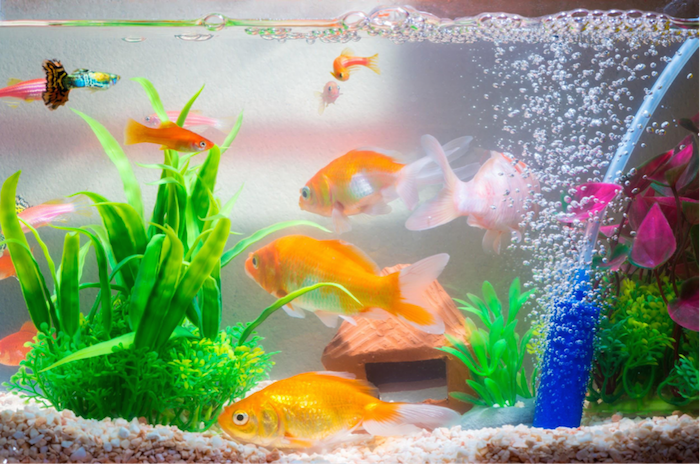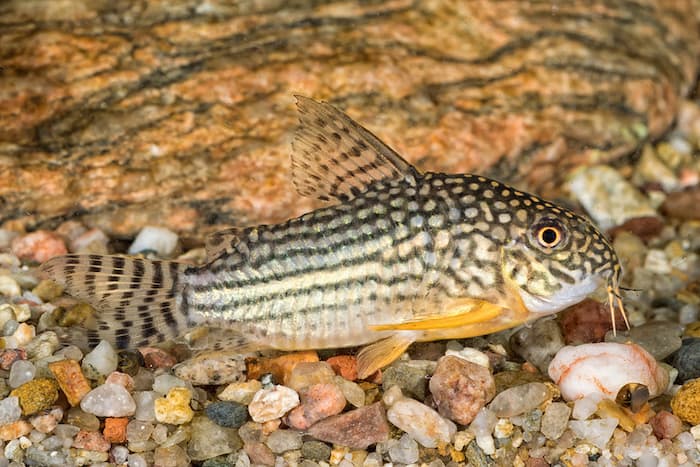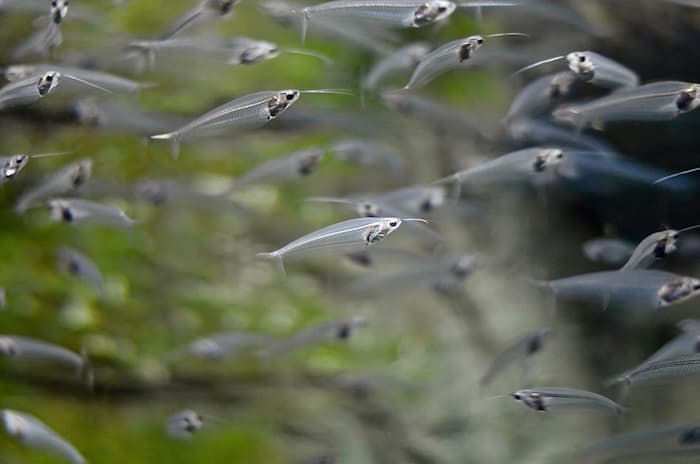Keeping an aquarium can be a relaxing and rewarding hobby for people of all ages. Not only do aquariums add beauty and serenity to your home, but they also provide a chance to learn about different types of fish and their unique behaviors.
However, for beginners, it can be overwhelming to know where to start. In this blog post, we will go over 10 aquarium fish that are perfect for beginners, as well as tips on how to properly care for them. We will also discuss the different types of fish and how to ensure they are compatible with one another. Whether you’re a first-time aquarium owner or are looking to add to your collection, this guide will provide you with all the information you need to get started.
Choosing the Right Fish
Aquariums can house a wide variety of fish, but it’s important to choose the right type for your tank. There are several factors to consider when selecting fish, including compatibility, water temperature, and ease of care.
Types of Fish
- Coldwater fish: These fish are able to survive in water temperatures around 60-65 degrees Fahrenheit. Examples include goldfish and koi.
- Tropical fish: These fish require water temperatures of around 75-80 degrees Fahrenheit. Examples include guppies, neon tetras, and betta fish.
- Saltwater fish: These fish require a specialized tank with saltwater and specific equipment such as protein skimmer. Examples include clownfish, damselfish, and tangs.
Compatibility
It’s important to consider the compatibility of the fish you choose. Some fish are aggressive and may harm or kill other fish, while others are peaceful and do well in community tanks. Research the specific needs and behaviors of each fish you’re considering before making a purchase.
Ease of Care
When selecting fish, it’s also important to consider their ease of care. Some fish are hardy and adaptable, while others are more delicate and require specific water conditions. Beginners should consider starting with fish that are known to be easy to care for such as Guppies, Neon Tetras, and Betta Fish.
Recommended Aquarium Fish for Newbies
1. Betta Fish
Yes, these famously feisty fish can make an excellent choice for a beginner, as long as you’re willing to keep them in their own tank instead of with other fish!
Bettas have beautiful, flowing fins that come in a variety of colors and patterns – making them an incredibly striking and vibrant addition to any tank. Their size also makes them low-maintenance, as they can thrive in small tanks with limited water changes required.
Feed your betta a high-quality, protein-rich food two to three times per day, with a variety of flakes and pellets, and frozen and live foods such as bloodworms and brine shrimp.
2. Guppies
Guppies are one of the most popular fish for beginners—and with good reason! They’re extremely hardy, easy to care for and come in a variety of stunning colors and patterns that make them an eye-catching addition to any aquarium.
Plus, they’re very easy to breed, so once you get the hang of it, these brightly colored fish can quickly populate your tank! Guppies do best in aquariums with plenty of plants for hiding places and with a temperature between 75-82°F.
Guppy care is simple: keep the water clean and properly oxygenated, feed them a combination of high-quality flakes and live or frozen foods, and make sure to provide plenty of places for them to hide.
According to Aquanswers aquarium care guides, you can only fit about 2 male Guppies in a 3-gallon tank. Therefore, you should consider a 10 to 20-gallon tank if you want more.
3. Neon Tetras
Neon Tetras are iconic in the aquarium world, known for their bright neon blue and red stripes. These peaceful fish are a great choice for novice aquarists as they’re easy to care for and get along well with other fish.
Plus, since they stay relatively small (about 1-1 ½ inches) they can thrive in smaller tanks. To keep your Neon Tetras healthy, feed them a variety of foods including flake, freeze-dried, and frozen food such as bloodworms or brine shrimp.
Your aquarium should have plenty of plants for hiding places and the water temperature should be kept between 72-78°F. Neon tetras need to be kept in groups of at least six, so consider getting a few extra if you plan on adding these little beauties to your tank.
4. Goldfish
Goldfish are a classic choice for beginner aquarists, and a great way to introduce yourself to fishkeeping. They’re hardy, easy to care for, and come in a variety of shapes and sizes – making them perfect for any size tank (or even an outdoor pond!).
The most common types of goldfish are the common goldfish, comet goldfish, and the fancy variety. Common goldfish are small (2-3 inches) and do best in ponds or larger tanks, while comets can grow up to 12 inches long and require a very large tank.
Fancy varieties come in all shapes and sizes, from veiltails to ranchus, and can range from 2-6 inches in length. Goldfish are omnivores, so they should be fed a combination of high-quality flakes/pellets and frozen or live foods.
Goldfish also require frequent water changes (about 25% per week) to keep their tanks clean and ammonia levels low. Keep the temperature between 65-72°F and avoid adding any other fish to the tank as many are known to nip at goldfish’s fins.
5. Platies
Platies are a great choice for beginner aquarists as they’re hardy, peaceful fish that can tolerate a wide range of water conditions. They come in many colors and patterns, ranging from reds and oranges to yellows and blacks, which makes them an attractive addition to any tank.
Platies are typically small, ranging from 2-3 inches in length, and can easily adapt to life in a community tank. Their diet consists of flakes or pellets along with live/frozen foods such as brine shrimp or bloodworms.
When choosing tank mates for your platy, look for other peaceful fish like tetras or guppies. Keep the tank temperature between 72-82°F and make sure to provide plenty of plants and hiding places for your platies to feel secure.
6. Mollies
Mollies are a great choice for beginner aquarists since they’re peaceful, hardy fish that come in a variety of stunning colors and patterns. They can reach up to 4-5 inches in length, so they work best in tanks at least 20 gallons or larger.
Mollies prefer warm water between 75-82°F and need plenty of hiding places, so be sure to provide them with lots of aquatic plants for shelter. As omnivores, they’ll benefit from a diet that includes flakes/pellets and live or frozen foods such as bloodworms or brine shrimp.
Mollies are best kept in groups of at least four, but avoid adding overcrowding the tank as mollies are known to be aggressive with other species. Stick to compatible fish like guppies, platies, and tetras for the best results.
7. Swordtails
Swordtails are a great choice for beginner aquarists, as they’re relatively easy to care for and get along well with other fish. They typically stay small (2-3 inches) and come in a variety of striking colors and patterns, from lush greens to bright oranges and yellows.
The swordtail is an omnivore and should be fed a diet that includes flakes/pellets, freeze-dried food, and live/frozen foods such as brine shrimp or bloodworms. They prefer warm water between 72-78°F and need plenty of places to hide – so make sure you provide them with lots of plants, driftwood, and rocks.
Swordtails should be kept in groups of at least six, so consider getting a few extra if you plan on adding these little beauties to your tank. Just make sure to provide enough space and choose compatible fish like tetras, platies, and mollies for the best results!
8. Danios
Danios are an excellent choice for beginner aquarists, as they’re vibrant, hardy fish that require minimal maintenance and get along well with other tank mates. They come in a variety of colors, from gold to silver to black, and range from 2-3 inches in length.
Danios are omnivores, so feed them a diet of flakes or pellets along with live/frozen foods like brine shrimp and bloodworms. They prefer water temperatures between 68-77°F but can tolerate a wide range of conditions.
When choosing tank mates for danios, stick to other small fish like tetras, platies, and mollies. Avoid adding aggressive fish like cichlids or large fish such as goldfish, as they can easily outcompete the danios for food and disrupt the tank’s delicate balance.
Overall, danios make great additions to any community tank – just be sure to provide plenty of hiding places and the right diet, and you can look forward to enjoying these colorful fish for years to come!
9. Barbs
Barbs are an excellent choice for beginner aquarists, as they’re hardy fish that come in a variety of vibrant colors and patterns. They can reach up to 6 inches in length, so make sure your tank is large enough to accommodate them (at least 20 gallons).
Barbs are omnivores and should be fed a diet that includes flakes/pellets, freeze-dried food, and live/frozen foods such as brine shrimp or bloodworms. They prefer warm water between 72-82°F, and need plenty of places to hide – so make sure to provide them with lots of rocks, plants, and driftwood in the tank.
Barbs can be kept in groups of at least six and should only be added to tanks with compatible fish such as tetras, platies, and mollies. Avoid adding aggressive species like cichlids or large fish such as goldfish, as they can easily outcompete the barbs for food and disrupt the tank’s delicate balance.
10. Corydoras Catfish
Corydoras catfish are an excellent choice for novice aquarists, as they’re hardy fish with peaceful temperaments and require minimal care. They range in size from about 1-3 inches, so you won’t need a very large tank to keep them (20 gallons or more should be fine).
Corydoras catfish are bottom dwellers that feed mainly on algae and other small particles. Offer them a variety of foods including flakes/pellets, freeze-dried food, and live/frozen foods such as brine shrimp or bloodworms. They prefer water temperatures between 72-77°F, so make sure you provide them with plenty of hiding places like rocks and driftwood.
Corydoras catfish should be kept in groups of at least six, so consider getting a few extra if you plan on adding these little guys to your tank. Just make sure to choose compatible fish such as tetras, platies, and mollies for the best results!
Caring for Your Fish
Water Quality and pH Levels
No matter what type of fish you keep, it’s important to maintain proper water quality. Regularly test your tank and make sure the pH levels are between 6.5-8 and ammonia/nitrite are at 0 ppm (parts per million). It’s also a good idea to do partial water changes weekly or biweekly; this will help keep your tank clean and reduce the risk of disease.
Basic Aquarium Maintenance
Once you’ve chosen the perfect fish, it’s time to get your tank set up and maintain it properly. Proper aquarium maintenance is essential for keeping your fish healthy and happy. Here are a few tips.
- Test the pH and nitrite levels of your water regularly.
- Change a portion of the tank water (10-15%) every week to keep it clean and free of toxins.
- Keep your filter running at all times, but be sure to check it regularly and replace its filter media when necessary.
- Clean the sides of the tank with an algae scraper to remove any unsightly buildup.
Tips for Feeding
Just like any pet, it’s important to feed your fish a balanced diet. Here are some tips for feeding your finned friends:
- Feed them only as much as they can consume in three minutes or less – this will help prevent overfeeding and keep their tank clean.
- Offer them a variety of foods
- Consider offering them some vegetables once in a while – cichlids love cucumbers!
- Avoid feeding them too much protein – this can lead to health problems and disrupt the tank’s delicate balance.
Conclusion
Choosing the right type of fish for your tank can be a daunting task, but with a little research and careful preparation, you can create the perfect home for your finned friends. Keep in mind that each species has its own unique needs – so make sure to read up on their ideal habitat and diet before adding them to your tank.

